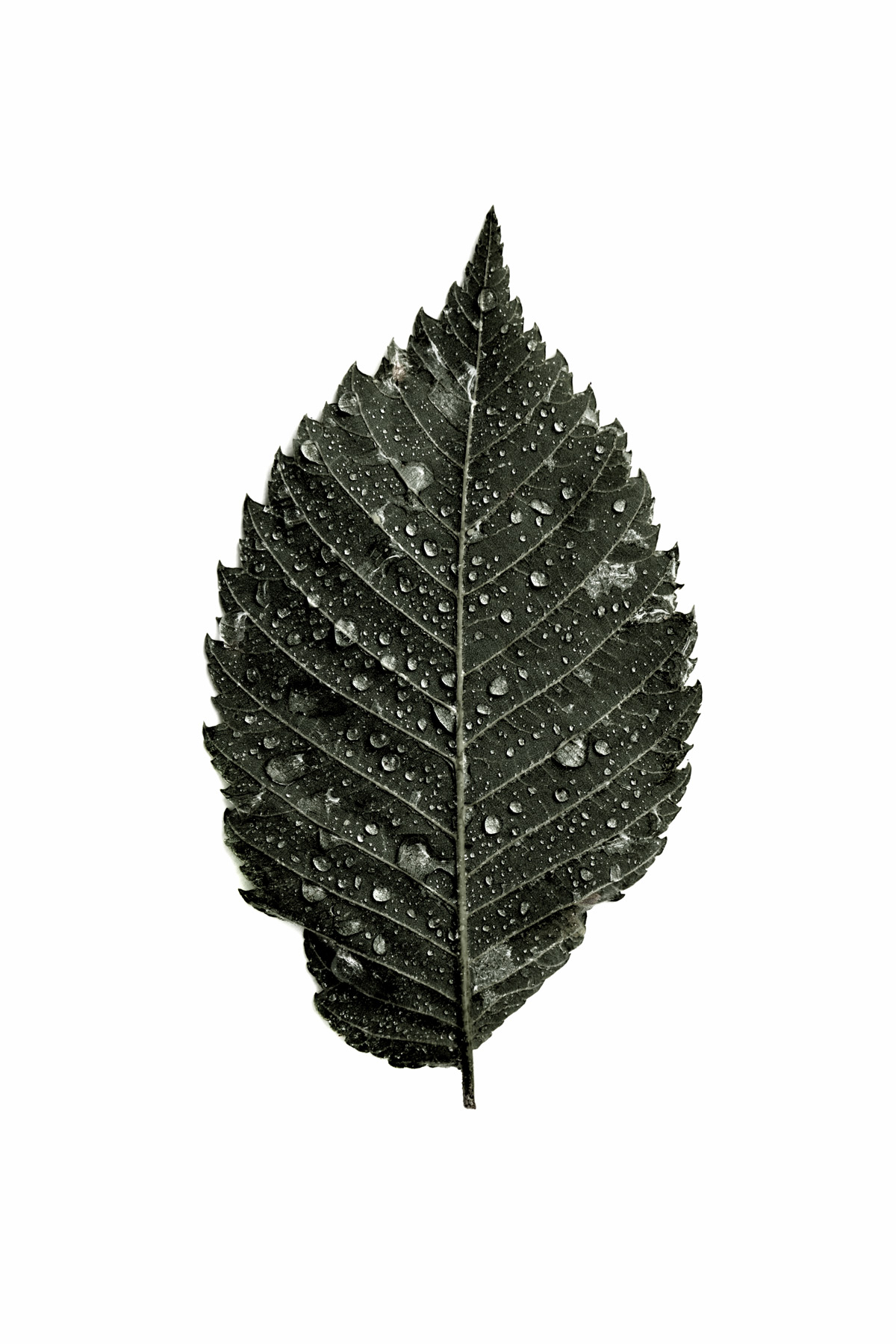
summer rain
we talk a lot about spring rains, but not so much about summer rains. for me, summer rains are about the smell of water evaporating from hot sidewalks, but also they are the summer equivalent of a winter snow day, when you get to wake up, and look outside, and then go back to sleep, and when you wake up again, you get to pick a book, and curl up under the covers with it for the rest of the day. it helps to have a dog who likes to curl up behind your knees.
elm leaf with raindrops
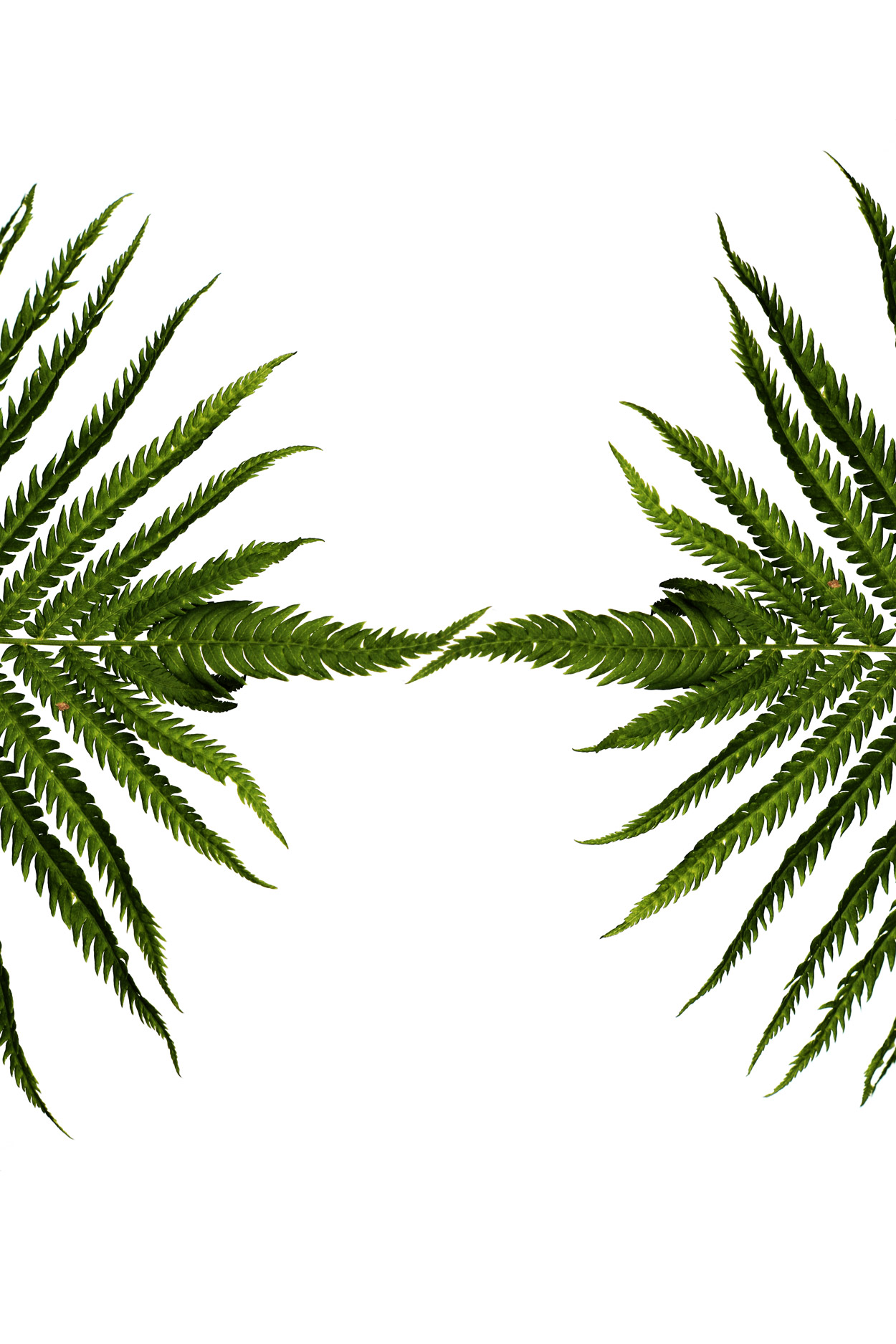
creation
i have identified six fern species in my woods so far: ostrich, interrupted, cinnamon, lady, sensitive, and maidenhair. my neighbor tells me that years ago our woods used to be full of bracken ferns but the local garden center dug them all up for resale (how, legally and morally, could they even do that?). my husband wants more ostrich ferns for spring fiddleheads. i want more bracken ferns for a primeval feeling understory to our woods. step aside, johnny appleseed. make way for mary fernspore.
ostrich fern fronds
-
Love the way they are shyly reaching for one another.
reply
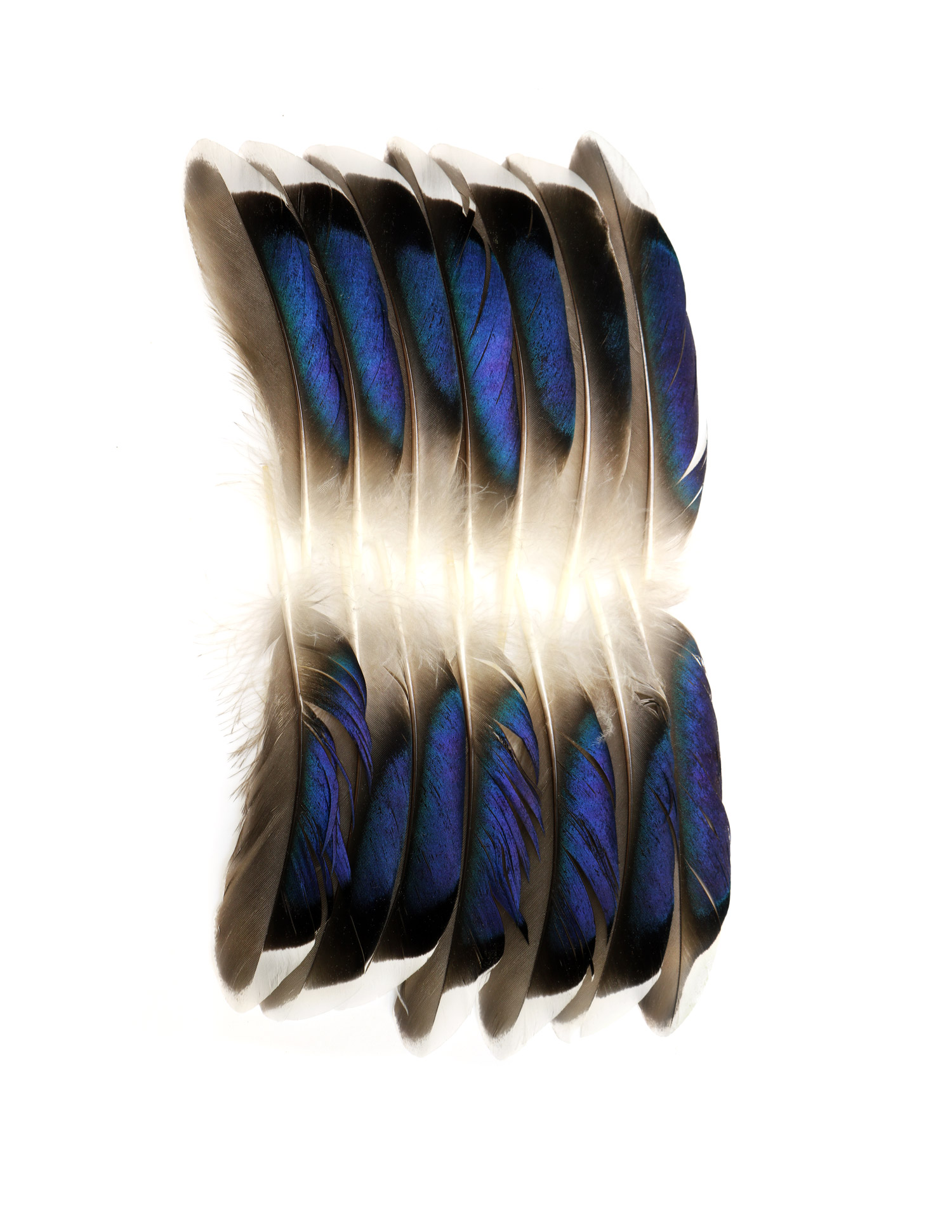
true blue
another take on yesterday’s cache. there’s not much true blue in nature, so when i find it i have to celebrate it. these wings aren’t actually blue–they are simply reflecting blue light. blue birds, like blue jays, get their color because each feather is made up of light-scattering, microscopic beads spaced in a way that everything except blue light is cancelled out. blue on any animal (including humans’ blue eyes) is due to some kind of light reflection of this type. The only exception is the obrina olivewing butterfly, which is the only known animal in nature that produces blue pigment. enjoy the reflection.
mallard wing feathers
-
I just finished reading a book called “The Feather Thief”. It was about a heist, at the Tring Natural History museum, of 100’s of bird skins stolen for their feathers to be used to create Victorian fishing flies. This photo reminded me of that book, although mallard feathers are not rare or on the CITES list (the Convention on International Trade in Endangered Species of Wild Fauna and Flora).
reply
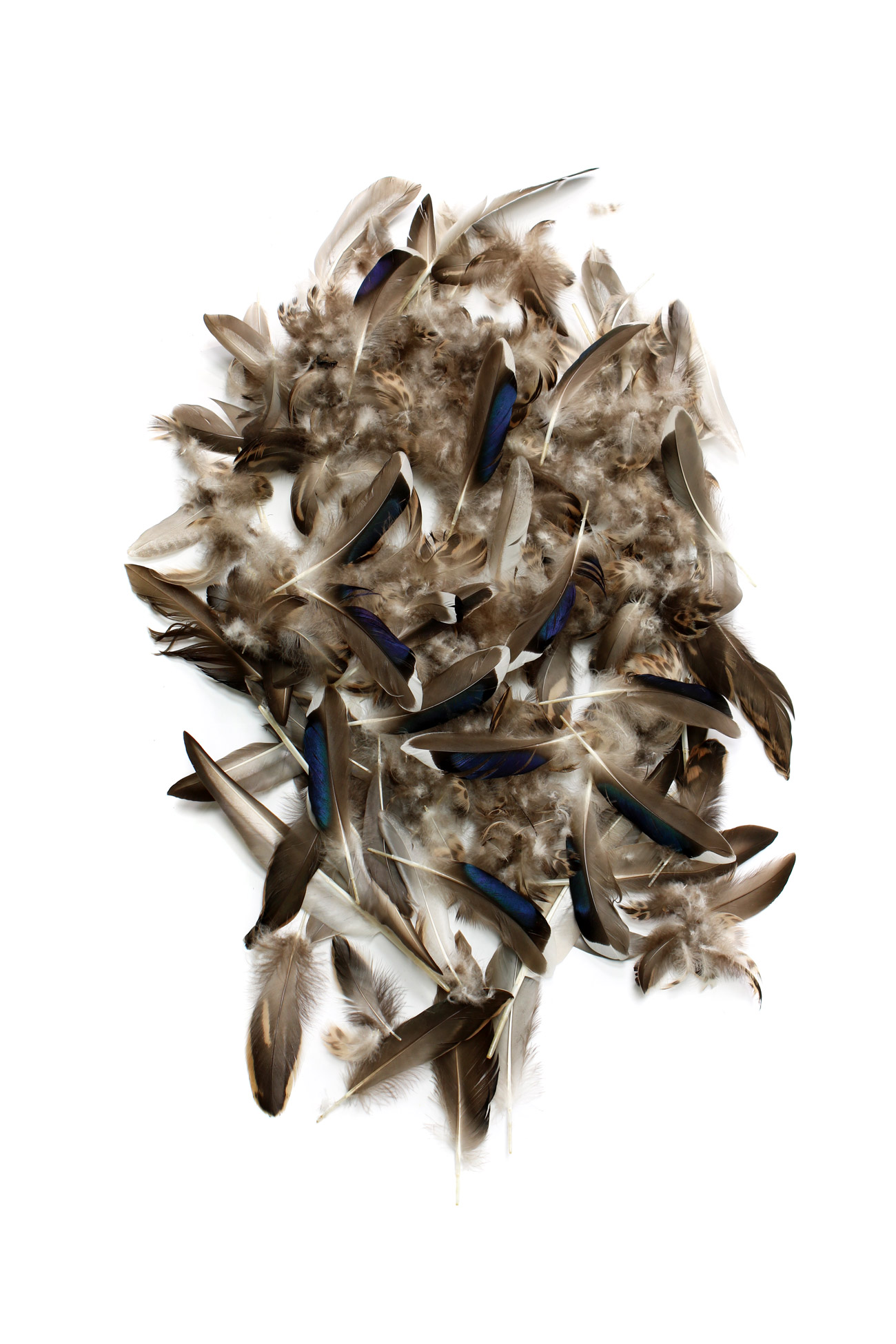
plucked clean
i picked up this collection of mallard feathers on my walk yesterday. it’s a not uncommon scene to happen upon on my lakeside walks. ducks, like rabbits, appear to be every predator’s favorite food. what amazes me every time though, is that this mess of feathers, usually in the middle of the trail, is so thorough and clean. as if the nocturnal predator, sat patiently pulling every single feather from its prey before hauling off the carcass. there is almost never any blood, and no body parts left behind. just a neat pile of cleanly plucked feathers. that’s it. whoever the predator is (eagle, osprey, hawk, owl, fox, coyote?) must have a way of swiftly killing the duck without a struggle and no blood (perhaps a broken neck), and additionally the dexterity to pluck the animal clean. and finally the strength to haul it away. i have no doubt that it can be done. i am constantly amazed by nature and it’s accumulated skills. i just lack the imagination to visualize the event. i sort of hope to see it one day.
mallard feathers
-
I’ve found such evidence in my yard more than once and wondered about the lack of blood, etc. It’s like magic. A gift from the bird, is how I’ve thought of it.
reply
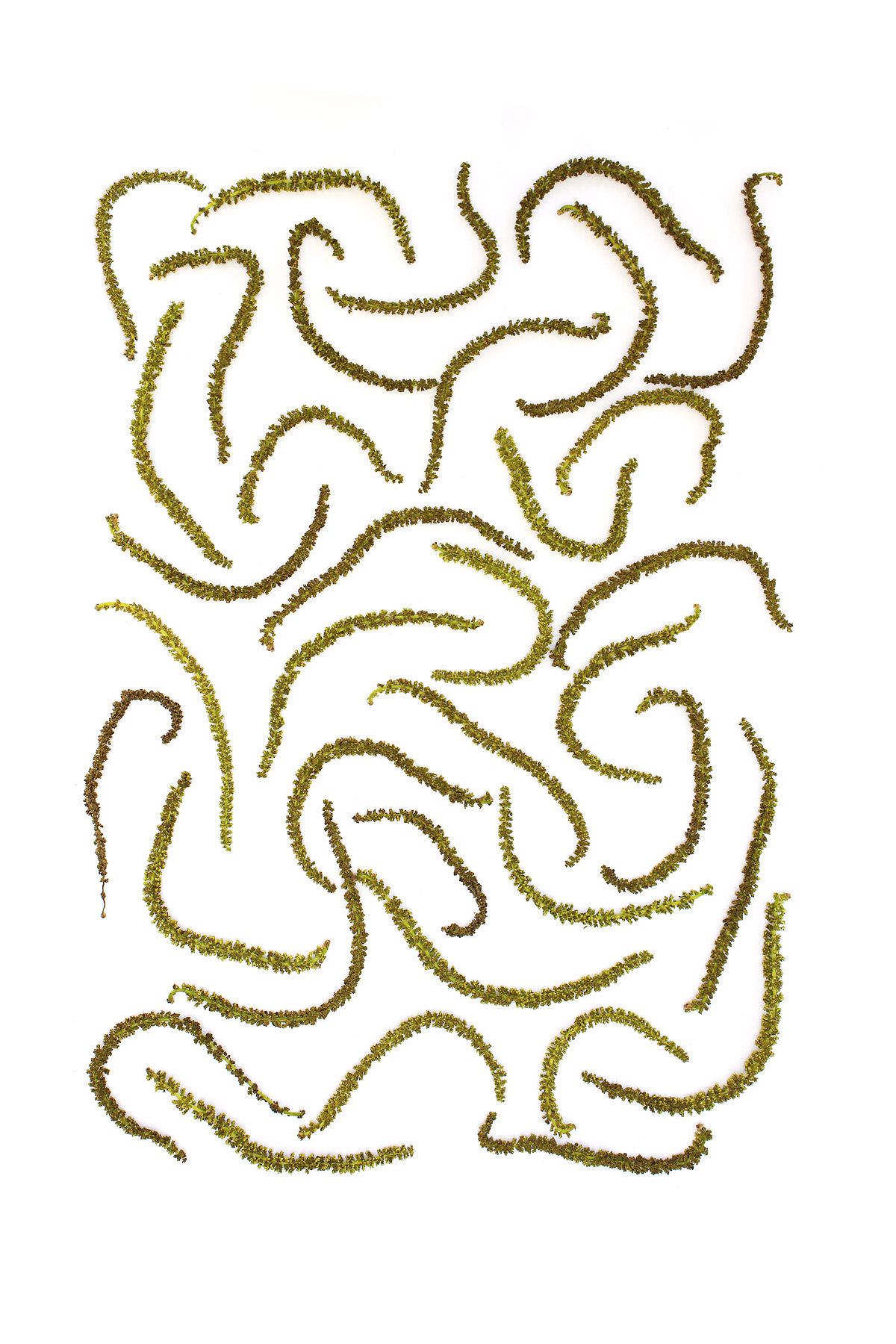
cathartic catkins
i am still processing the spectacle i participated in last night, humbly called a “plant walk”. it was the first time i felt i was in the presence of a true savant. and i don’t say that lightly, as i worked for 15 years as a research engineer in the aerospace industry with mostly PhDs–people highly passionate and devoted to their chosen industry. but last night, sam thayer demonstrated a level of combined passion and learning that exceeded anything i have experienced before. last night, after the plant walk was over, and a few of us were invited into the host’s house for a glass of wine to top off the evening, we walked under a mature butternut tree beside the entrance to the farmhouse. sam glanced up, and offhandedly, and mostly to himself, said “wow, those are unusually large catkins, and a good two weeks behind. it must be because we are in a valley” it was a mental note to himself. a further refining of his already deep botanical taxonomy of the region. it was as if a mental index card had gotten written and filed away:
valleys with temperatures measurably cooler than the surrounding areas will experience delayed, and perhaps exaggerated*, spring fruiting. (*note to self: need to verify the exaggeration of spring fluorescence in cooler valleys.)”
STILL blog has made me a pretty good amateur naturalist of my bioregion. but sam thayer was something else entirely. he claims his acquired knowledge is simply on par with that of the original indigenous peoples. i believe him. but it makes one’s heart hurt to think about. about the enormity of what was lost.
butternut catkins; menomonie, wisconsin
-
Looks like a Matisse, Mary Jo.
reply



do you know that in French we actually have a word for this smell that’s left after the rain (maybe you have it in English too) ? it’s “petrichor” ! Just by saying the word you can feel this sweet fragrance, I think !!!
On a le même mot en anglais! Et qui veut dire la même chose! En français comment prononcez-vous le “ch?” Comme dans le mot “choral?”
Lovely! I associate that smell with rain hitting dusty dirt roads. We ought to have a word for it!!
stone-song